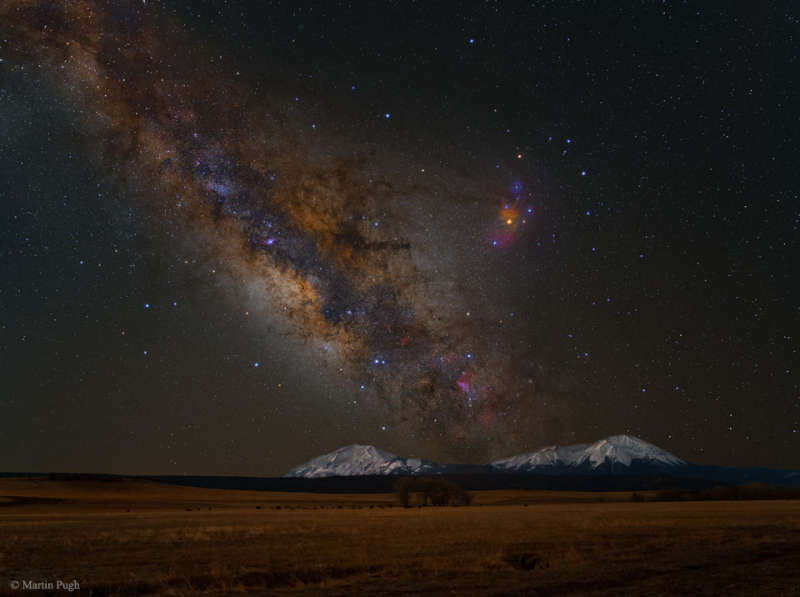
|
Credit & Copyright: Martin Pugh;
Rollover Annotation: Judy Schmidt
Explanation:
That's not lightning, and it did not strike between those mountains.
The diagonal band is actually the central band of our Milky Way Galaxy, while the
twin peaks are actually called the
Spanish Peaks -- but located in
Colorado,
USA.
Although each
Spanish peak
is composed of a slightly different type of rock, both are approximately
25 million years old.
This serene yet spirited image composite was
meticulously created by merging a series of images all taken from the same location
on one night and early last month.
In the first series of exposures, the background sky was built up, with great detail
being revealed in the
Milky Way dust lanes as well as the
large colorful region
surrounding the star
Rho Ophiuchus just right of center.
One sky image, though, was taken using a
fogging
filter
so that brighter stars would appear more spread out and so more prominent.
As a bonus, the planets
Mars and
Saturn
are placed right above peaks and make an orange triangle with the bright star
Antares.
Later that night, after the moonrise, the Moon itself
naturally illuminated the snow covered mountain tops.
|
January February March April May June July August September October November December |
| |||||||||||||||||||||||||||||||||||||||||||||||||||||||
NASA Web Site Statements, Warnings, and Disclaimers
NASA Official: Jay Norris. Specific rights apply.
A service of: LHEA at NASA / GSFC
& Michigan Tech. U.
Based on Astronomy Picture
Of the Day
Publications with keywords: Milky Way
Publications with words: Milky Way
See also:
- Galaxies in Space
- APOD: 2025 February 9 Á Milky Way over the Australian Pinnacles
- APOD: 2024 November 24 Á Journey to the Center of the Galaxy
- APOD: 2024 November 5 Á Milky Way over Easter Island
- APOD: 2024 August 4 Á Gaia: Here Comes the Sun
- APOD: 2024 July 29 Á Milky Way over Uluru
- APOD: 2024 May 29 Á Stairway to the Milky Way
